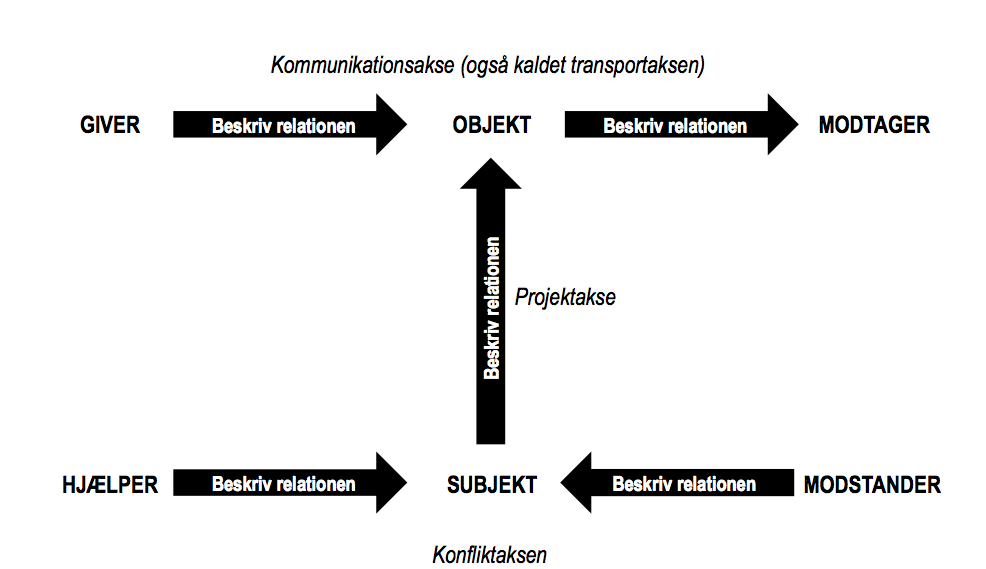The actantial model (Greimas, 1973) has traditionally been used to examine and describe the different roles, functions and actions in storytelling. However, the model can also be an effective tool for initiating development processes through narrative scenarios. The special strength of the actantial model is that it serves as a checklist of the key players of the project while creating a coherent picture of relationships, functions and possible actions. In short, the actantial model can be used as a tool for identifying possible development strategies, planning projects and communication.
The participant model consists of 6 roles, which are denoted actants:
- Subject – Who is the “main character”?
- Object – The subject always has a project, a goal or something that he or she wants.
- Opponent – Who or what tries to prevent the subject from getting the object?
- Helper – Who or what helps the subject to get the object?
- Sender – Who or what gives the object away?
- Receiver – Who or what gets the item in the end?
The actants are placed onto three axes:
- Project axis – Displays the subject (main character) and the object (goal of the main character).
- Conflict axis – The conflict axis shows the helper and the opponent who are respectively trying to help and to prevent the subject from succeeding.
- Communication axis – The end of the story is shown with the sender handing over the object to the receiver (who is often the same as the subject).
By placing the different stakeholders or concepts of your project into the 6 actant categories the logic of the development process can be clarified in a simple model, which can work as a guide for the further development.


